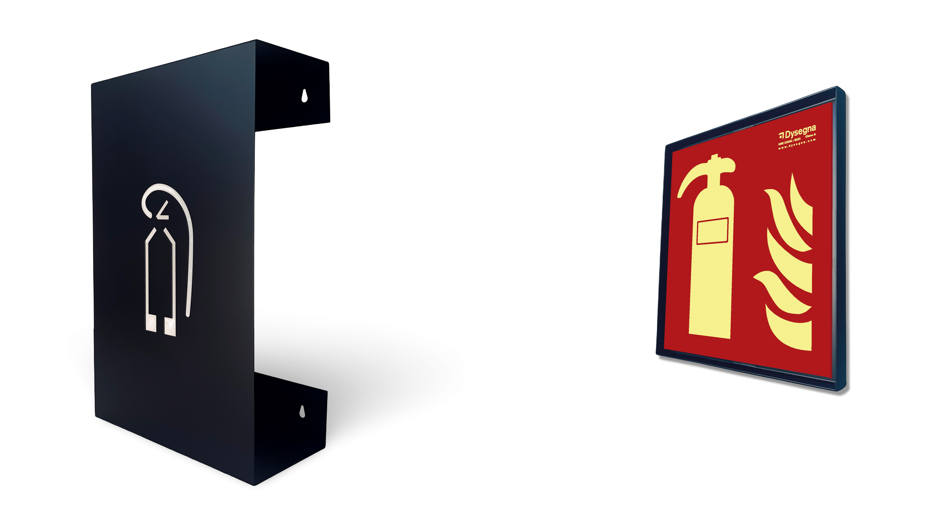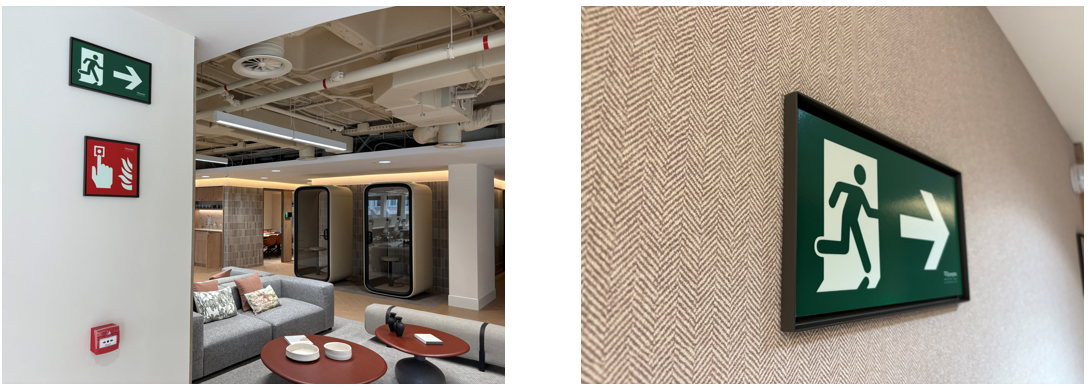Emergency signage: New trends without compromising safety
In an increasingly demanding business world where design and functionality go hand in hand, emergency signage has moved beyond its outdated, “cheap-looking” image to become a strategic element that blends aesthetics and protection.
In this article, we explore the latest trends in materials and finishes, the impact of the new UNE 23035 standard, and why investing in premium signage — with high-end materials and refined finishes — is a worthwhile decision.
Traditionally, emergency signs were made from photoluminescent PVC with little aesthetic ambition. Today, however, architects and designers are opting for more sophisticated solutions: decorative mounting plates, custom-designed supports that add perspective, depth, shadows, or textures.
This new approach to emergency signage reinforces its functional purpose — because a sign that stands out is a sign that gets seen. The use of raw materials such as aluminum, stainless steel, or wood is becoming increasingly popular, and the variety of mounting systems opens up an endless world of creative possibilities.

The Regulatory Leap: UNE 23035 as a Quality Standard
The recent update to standard UNE 23035 — which unifies criteria for luminance, size, and placement — has driven a significant upgrade in evacuation systems. Companies are now required to:
1. Ensure that all signage complies with the UNE 23035-1, -2, and -4 sub-standards.
2. Verify luminous intensity after 60 minutes of exposure to a light source.
3. Adjust dimensions and typography for quick interpretation, always based on the intended viewing distance.
Adopting this regulation is not just a legal obligation — it is a guarantee that, in the event of an emergency, premium signage will respond with the necessary effectiveness.
In any workplace — offices, factories, shopping centers — emergency signage is the last line of defense in the face of the unexpected.
Its effectiveness saves lives and prevents panic: a well-positioned sign, manufactured with high-luminance standards and ergonomic design, ensures there’s no hesitation about where to evacuate.
Maintaining these standards goes beyond basic compliance — it represents a genuine act of corporate responsibility.
But beyond safety, custom-designed signage can also become a decorative feature. Imagine an office lobby with brushed aluminum plates discreetly embedded into wooden panels, or backlit pictograms that enhance an exposed concrete wall.
This “architectural” approach creates greater visual coherence aligned with the rest of the project.
Moreover, it elevates the perceived quality for both employees and visitors. While the initial investment may be higher, the return is immediate.
Investing in premium emergency signage not only enhances corporate image, but also reinforces a sense of care and professionalism throughout the space.

Emergency signage is no longer just a legal requirement — it's a key element of the spatial experience. With sophisticated finishes, advanced technologies, and design that speaks the same language as the architecture, each sign becomes a valuable asset: it protects people, strengthens your brand, and elevates any project to the next level. Dare to innovate with premium signage and turn safety into a hallmark of professional distinction.


